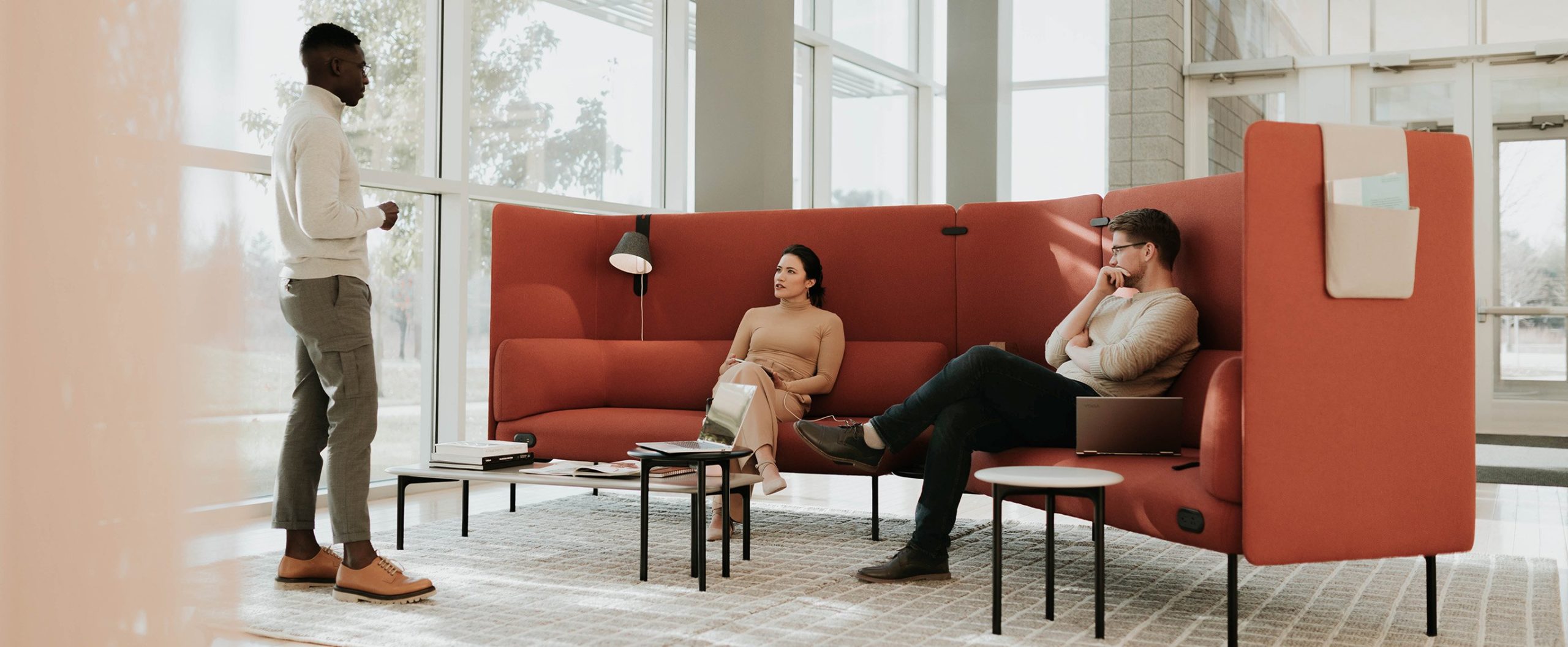09.07.22
5 Office Acoustics Solutions to Minimize Complaints of, “Keep It Down, I’m Trying To…”
Uncategorized
It’s finally happening. We’re getting together again, and I love it. It energizes us and is better for our physical and mental health. With that energy though is the arrival of a potential distraction in the workplace—noise.
When is noise a distraction and when is it not? When I’m playing my piano for people, the noise is enjoyable, beautiful music (I hope). If I move my grand piano right next to a person trying to have a conference call, they might not appreciate the beauty of my concerto quite as much. The challenge is to recognize the types of spaces that best accommodate different activities.
So, what can you do when energy meets annoyance? It’s loud when you need quiet? The room is silent when you want to celebrate? How do you play piano in a library?
Let’s take a look at some flexible ways to manage these scenarios through office acoustics solutions:
Layer spaces for specific uses and acoustical privacy. Look—if you need a library, build a library. But also recognize that complete silence in a shared space isn’t a realistic expectation. You don’t need construction and drywall to create rooms that can be designated for specific uses and sound levels—try using furniture, plant walls, and interior architecture to create rooms within rooms.
Designate spaces. Whether it’s overt with messaging or more subtle per cultural norms, you can solve sound issues by designating spaces as quiet. For example, refresh areas and café spaces naturally give permission for open conversation, music, and celebrations. A small area with limited sight lines, low lighting, and lounge furniture can indicate usage for calm, quiet activities. These spaces are ideal with walls and doors but can also be designed with curtains and/or shelving.

Plan for video and conferences calls. Someone-who-shall-remain-nameless once shared a story with me about officemates who always started calls/dialed a number on speaker rather than using a headset. As a fix, she reset the phone default sound level. That dial tone was much less of an interruption and no one else even noticed. Coming back to the office means hearing even more phone and video conversations. Make no mistake—this will be an issue. So, spaces and touchdowns for these conversations need to have an expectation: if you are going to make noise or have a conversation that doesn’t include me, go there. Make it a desired space—maybe even encouraging cultural norms—by having a beautiful backdrop for the caller to be in front of.
Make private offices do double time. Many people with a private office aren’t there a lot. They may work in sales and be on the road. Or, they may be executives with commitments elsewhere. At Haworth HQ, we have executive private offices that are built to also be conference rooms. When the occupant is out of the office, locked storage and sliding doors hide their personal materials so the space can be used as a small conference room.
Embrace the booth. Prior to the pandemic, “phone booths” were popular as small, shared offices and often bookable. That popularity is increasing, and products have evolved to dynamic stand-alone pieces that aren’t just for calls anymore.
Those are my KVS tips—hope you enjoyed these office acoustics solutions and find some of them useful in creating a harmonious workplace.
This article was originally published on LinkedIn by Kurt Vander Schuur

